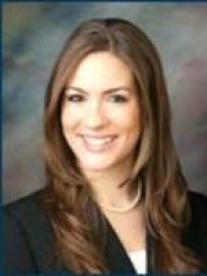The U.S. Court of Appeals for the Fourth Circuit affirmed convictions of criminal counterfeiting based on the defendants’ manufacture, importation and sale of handbags and wallets bearing marks “substantially indistinguishable” from the registered trademarks of fashion house Burberry, namely Burberry’s signature colored plaid pattern (the “Burberry Check” mark), which was registered with the U.S. Patent and Trademark Office (PTO) in 1996. In upholding the convictions, the 4th Circuit found that there was sufficient supporting evidence presented at trial, and that certain contested statements of the law made by the government did not deprive the defendants of a fair trial due to curative jury instructions from the district court. United States v. Lam, Case No. 11-4056 (4th Cir., April 16, 2012) (Duncan, J., Shedd, J., joining) (Floyd, J., partial concurrence, partial dissent and dissent from the judgment).
The defendants owned or controlled at least 10 U.S. companies engaged in importation of legitimate and counterfeit handbags and wallets. They also had authority over at least three companies in China and Hong Kong that manufactured and exported counterfeit goods.
The criminal charges were based on three different seizures by U.S. Customs and Border Patrol (CBP) during a two-month period in 2005. Shipments addressed to one of the defendants’ companies were seized in Norfolk, Virginia and contained handbags and wallets bearing alleged counterfeit Burberry marks hidden amongst legitimate handbags.
After they were indicted on charges of conspiracy to traffic counterfeit goods under 18 U.S.C. §371, trafficking counterfeit goods under §2320(a) and smuggling under §545, the defendants’ first trial (in the U.S. District Court for the Eastern District of Virginia) resulted in a hung jury.
To obtain a conviction under §2320(a), the government is required to prove that the defendants intentionally used a mark which is known to be counterfeit in connection with trafficking or attempted to traffic goods or services. Under the statute, a counterfeit mark is defined as use of “a spurious mark … that is identical with, or substantially indistinguishable from, a mark registered … in the United States Patent and Trademark Office and in use.”
Before the trial, the defendants filed a motion in limine seeking to have the district court declare the phrase “substantially indistinguishable” unconstitutionally vague. The district court denied the motion.
At trial, the government presented evidence including CBP testimony, authentic Burberry handbags and testimony that Burberry filed a civil suit in 2005 against one of the defendants’ companies which resulted in a consent judgment in Burberry’s favor. That lawsuit was based on a U.S. copyright application filed by one of the defendants’ companies for an equestrian knight (similar to another registered Burberry trademark) superimposed over a plaid pattern resembling the Burberry Check mark.
Also during trial, the government indicated, on several occasions, that whether a claimed counterfeit mark was “substantially indistinguishable” from a legitimate mark should be based on the opinion of a “reasonable consumer of ordinary intelligence,” or an “average person.” The defendants objected to the government’s phrasing as an incorrect statement of the law, and the objections were sustained by the district court. The district court then instructed the jury that it was to apply the definition of the law as set forth by the court and not by the government, and it instructed the jury to compare the marks side-by-side using their “own eyes” to decide for themselves whether they were “substantially indistinguishable.” The jury then found the plaid pattern on the seized goods to be a counterfeit of the Burberry Check mark, and the defendants were found guilty on all charges.
The defendants moved for acquittal and a new trial, claiming that the evidence was insufficient as a matter of law and that the government’s misstatements deprived them of a fair trial. Although the district court agreed that the government’s misstatements of the law were misleading and extensive, it used the 4th Circuit’s six-part test from U.S. v. Lighty to determine that the defendants received a fair trial, because the government did not intend to purposely mislead the jury, and because the evidence was sufficient to support the convictions absent the misstatements. Thus, the motions were denied.
On appeal to the 4th Circuit, the defendants challenged the sufficiency of the evidence presented by the government to show that the marks were “substantially indistinguishable.” The 4th Circuit, however, held that the marks were similar enough to allow a reasonable jury to conclude that the defendants’ goods were fake, especially in view of evidence that Burberry often sells goods that contain both the Burberry Check mark and the Burberry equestrian knight mark, even if the marks were not registered as one unitary mark. In addition, because the defendants sold the same category of goods as Burberry (i.e., handbags and wallets), the court found such evidence was sufficient to support the jury’s finding that the marks were “substantially indistinguishable.”
The court also dismissed the defendants’ claim that the counterfeiting statute was unconstitutionally vague. Construing the language of the statute as a whole, the 4th Circuit held that the plain language of the statute was unambiguous in defining the degree to which a spurious mark must resemble a registered trademark to be determined counterfeit.
Finally, the 4th Circuit held that the district court did not abuse its discretion in ruling that its curative instructions to correct the government’s misstatements at trial were sufficient. The 4th Circuit determined that the defendants were afforded a fair trial and affirmed the district court’s rulings.
Judge Floyd dissented from the judgment because he believed that the government’s misstatements of the law at trial deprived the defendants of a fair trial. In particular, Floyd thought the government attempted to mislead the jury due to the frequency and severity of its statements during trial and closing arguments.




 i
i

